Frozen Shoulder: Causes, Symptoms, and Effective Physiotherapy Solutions
Frozen shoulder, also known as adhesive capsulitis, is a condition that causes pain and stiffness in the shoulder joint. The shoulder becomes progressively more difficult to move, restricting range of motion. While the exact cause isn’t always clear, frozen shoulder can significantly affect daily life, making even simple tasks like reaching or lifting challenging.
In this blog post, we’ll break down the causes, symptoms, and effective physiotherapy solutions for frozen shoulder, so you can better understand this condition and how treatment can help improve your mobility and comfort.
What Is Frozen Shoulder?
Frozen shoulder is a condition that involves the inflammation and stiffening of the capsule surrounding the shoulder joint. This can result in significant pain and a limited range of motion. The shoulder joint consists of a ball-and-socket design, and when the capsule thickens and tightens, it can restrict movement, leading to symptoms of pain and stiffness.
What Causes Frozen Shoulder?
While the exact cause of frozen shoulder isn’t always known, there are several factors that can contribute to its development:
Injury or Surgery
Shoulder injuries or surgery, especially when the shoulder is immobilized for a period of time (like after rotator cuff surgery or a broken arm), can trigger frozen shoulder. The lack of movement during recovery can lead to stiffening in the shoulder joint.Diabetes
People with diabetes are more likely to develop frozen shoulder. The exact relationship between diabetes and frozen shoulder isn’t fully understood, but it’s believed that high blood sugar levels may contribute to changes in the tissues around the shoulder joint, increasing the likelihood of developing the condition.Age and Gender
Frozen shoulder is more common in individuals aged 40 to 60, and it tends to affect women more than men. This makes it particularly important for individuals in this age range to be aware of the signs of the condition.Immobility
A period of immobilization, such as when recovering from an injury or surgery, can also contribute to the development of frozen shoulder. Without movement, the shoulder joint may lose its natural flexibility, leading to stiffness and pain.Underlying Health Conditions
Certain health conditions, such as heart disease, stroke, and thyroid disorders, may increase the risk of developing frozen shoulder.
Symptoms of Frozen Shoulder
Frozen shoulder progresses in three stages, each with its own set of symptoms:
Freezing Stage
During this stage, you’ll experience a gradual onset of pain and stiffness in the shoulder. The pain may increase when moving the arm, especially at night, and you may begin to notice a decrease in your shoulder’s range of motion. This stage can last for several months.Frozen Stage
In this stage, the pain may decrease, but the stiffness becomes more pronounced. You may find it difficult to perform routine activities like combing your hair or reaching behind your back. The range of motion is significantly reduced during this stage.Thawing Stage
This stage is characterized by a gradual return of movement and relief from pain. The shoulder starts to loosen up, and the range of motion begins to improve. The thawing stage can take anywhere from a few months to a year to fully recover from.
How Physiotherapy Can Help
Physiotherapy is one of the most effective ways to manage and treat frozen shoulder. While the condition can be painful, physiotherapy plays a key role in restoring mobility and reducing pain.
Pain Management
Physiotherapists use techniques like manual therapy, joint mobilizations, and modalities like heat or cold therapy to help manage the pain associated with frozen shoulder. These treatments reduce inflammation and provide relief, especially in the early stages of the condition.Stretching Exercises
Gentle stretching exercises are essential in improving the shoulder’s range of motion. A physiotherapist will guide you through a series of stretches to gradually increase flexibility and reduce stiffness. Stretching helps to loosen the tissues around the shoulder joint, allowing for greater mobility.Strengthening Exercises
Strengthening the muscles surrounding the shoulder is important to support the joint and prevent further injury. Your physiotherapist will provide exercises to strengthen the rotator cuff muscles and the surrounding muscles to promote stability and prevent future issues.Postural Corrections
Posture can greatly affect shoulder function. Your physiotherapist will assess your posture and may suggest adjustments to avoid placing additional strain on the shoulder joint. By addressing poor posture, you can reduce the likelihood of further complications and help your shoulder recover more efficiently.Manual Therapy
Manual therapy is an essential component of physiotherapy for frozen shoulder. It includes techniques like soft tissue massage, joint mobilization, and trigger point release, which can help reduce stiffness and improve movement in the shoulder.Education and Prevention
Your physiotherapist will educate you on proper techniques for shoulder movement and ergonomics, especially if you need to modify daily activities during recovery. They will also guide you on how to prevent further shoulder problems in the future.
When to Seek Physiotherapy for Frozen Shoulder
If you’re experiencing shoulder pain or stiffness that’s affecting your daily activities, physiotherapy can help. Early intervention can make a big difference in your recovery and prevent the condition from worsening. Don’t wait for the pain to become unbearable—seek professional advice as soon as possible.
Conclusion
Frozen shoulder is a condition that can greatly affect your quality of life, but with the right physiotherapy treatments, recovery is possible. By addressing pain, restoring mobility, and strengthening the surrounding muscles, physiotherapy can help you regain full shoulder function. If you’re struggling with frozen shoulder, reach out to us at Take Control Active Rehab today to start your recovery journey.



